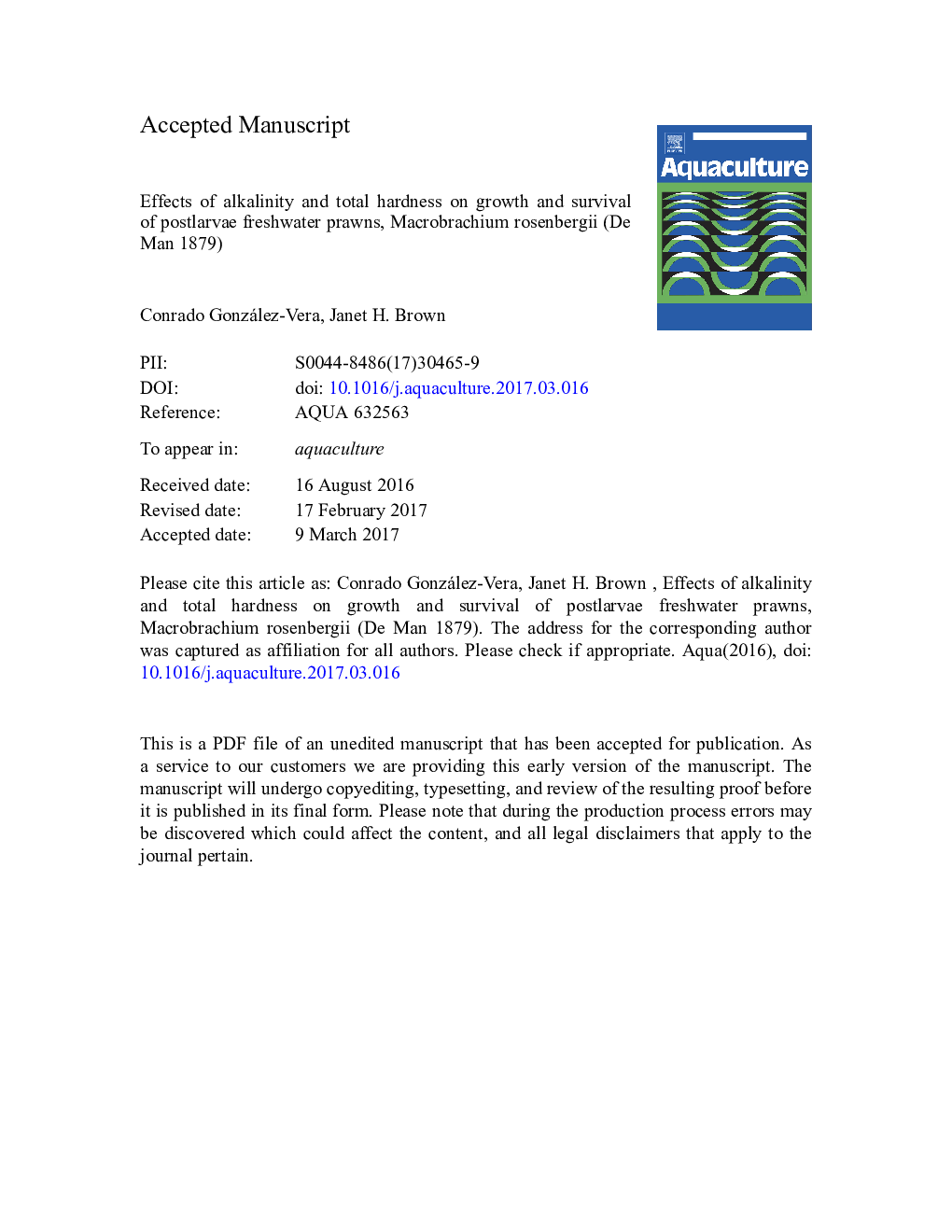| Article ID | Journal | Published Year | Pages | File Type |
|---|---|---|---|---|
| 5539073 | Aquaculture | 2017 | 15 Pages |
Abstract
Calcareous exoskeleton in crustaceans provides protection and support, but also imposes severe limitations, since growth is only possible by moulting. Total hardness and alkalinity of the water are important considerations in the culture of Macrobrachium rosenbergii, since they represent the concentrations of cations (calcium-magnesium) and anions (carbonates), necessary for the mineralization of the exoskeleton. M. rosenbergii has a wide range of tolerance to most of the critical parameters in aquaculture. However, the optimum levels of combinations of both alkalinity and total hardness factors for the species are yet to be fully identified. Therefore, the chemical composition of the different water bodies, and their variations, demonstrate that site selection is of paramount importance for the culture of crustaceans, depending on their requirements for alkalinity and total hardness, and the aim of this study was to investigate the effects of environmental alkalinity and total hardness in the development of PL of M. rosenbergii, as well as to identify the maximum tolerance limits and the optimum range of levels of both factors, individually and as a synergistic effect for the prawns. It was found that alkalinity levels of 250 mg Lâ 1 as CaCO3 were lethal for the species and that PL of the species could grow and survive at total hardness levels of 1000 mg Lâ 1 as CaCO3 as long as the alkalinity was lower than 100 mg Lâ 1 as CaCO3.
Related Topics
Life Sciences
Agricultural and Biological Sciences
Aquatic Science
Authors
Conrado González-Vera, Janet H. Brown,
